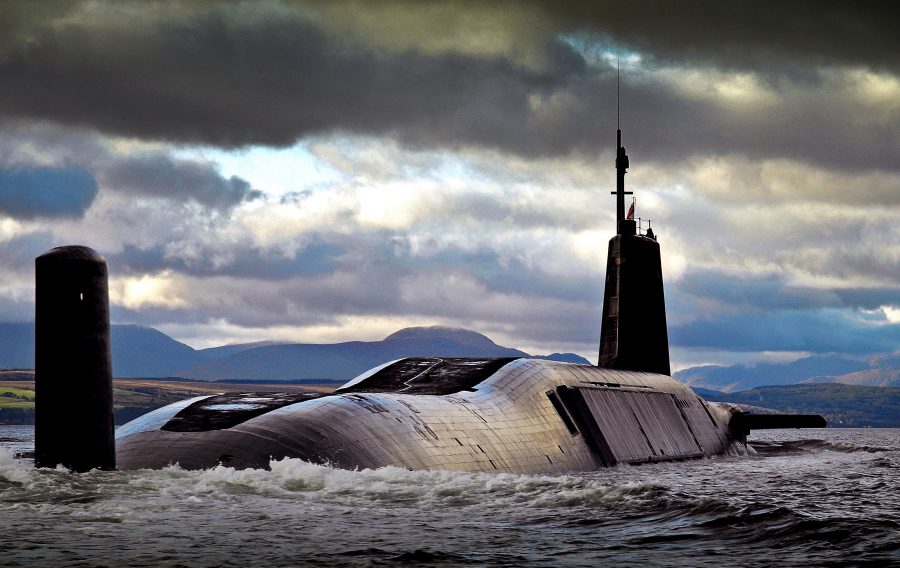
The Ministry of Defence has released a report detailing the progress made on the Dreadnought submarine programme and other related programmes over the past year.
Currently, four Vanguard Class Ballistic Missile Submarines that are nearing the ends of their service life are providing the UK’s nuclear deterrent capability.
Parliament has voted several times to renew the United Kingdom’s (UK) nuclear deterrent, most recently in 2016 with an overwhelming majority in favour of retaining the capability and replacing the Vanguard Class submarines with four new Dreadnought Class submarines.
The Dreadnought Class submarines will ensure that the UK has a credible, independent and capable nuclear deterrent out to the 2060s and beyond.
The report states that the Dreadnought submarine programme is within budget and the First of Class vessel, HMS Dreadnought, remains on schedule to enter service in the early 2030s.
The programme is currently in Delivery Phase 2 (DP2), which will run until March 2021. This year has seen commitments of around £2.5Bn within DP2, supporting the building of facilities at BAE Systems’ shipyard in Barrow-in-Furness and the next generation of facilities at Rolls-Royce’s Raynesway site in Derby, as well as continued design and construction activity.
In September construction work officially started on Valiant, the second in class of the Dreadnought submarines. The third and fourth boats’ names were also announced this year; Warspite and King George VI.
The report says this investment meant the MOD could extend its commitment to Rolls-Royce Submarines by awarding a contract worth nearly £480 million for the manufacture and delivery of the nuclear propulsion power plants, the Pressurised Water Reactor 3, for all four Dreadnought submarines.
The contract helps support over 600 highly skilled UK jobs at Rolls-Royce Submarines based in Derbyshire, enabling the company to make further commitments into the Dreadnought supply chain of Small and Medium Enterprise companies.
The report touches upon the issues of technical complications with the manufacturing of the missile tubes to be used in the Common Missile Compartment being developed for the UK’s submarines and the United States’ (US) Columbia Class. Problems with welding on some missile tubes for the Dreadnought Class submarines originally identified in 2018, are now being addressed with on-going assessment and repair work. The cost impact of bringing the missile tubes up to the required high standards is currently being assessed.
The cost of the Dreadnought programme is also covered. The total cost of the programme is expected to be £31 billion (including inflation over the lifetime of the programme) with a contingency of £10 billion.
MOD was given access to up to £600 million in Financial Year 2018/19 from the contingency to enable opportunities to be taken to drive out cost and risk later in the Dreadnought programme. MOD has also agreed access to the contingency with Her Majesty’s Treasury, for similar reasons, in Financial Year 2019/20 and 2020/21. To date £7 billion has been spent so far on the concept, assessment, and early delivery phases – £1.5 billion of which was spent in Financial Year 2018/19.
There has been significant investment in infrastructure across the Defence Nuclear Enterprise and looks set to continue.
Construction has startedson the Primary Build Facility at the Barrow-in-Furness shipyard, where fabrication of the submarine reactor pipework and the assembly of the reactor will take place, together with supporting office and welfare facilities.
These new facilities will help facilitate a more efficient submarine production process for the submarine programme. The facilities completed such as the Central Yard Facility and Blast and Paint Facility are working well.
At the Rolls-Royce site in Raynesway, progress is being made with the facilities where construction and testing of the new nuclear reactor cores will take place. The site manufactures reactor cores for our submarine nuclear propulsion plants in support of the Dreadnought Programme.
Work is also progressing at Babcock Marine’s Devonport Dockyard to construct the facilities to defuel decommissioned attack submarines, and activity at HMNB Clyde continues to support submarine operations. There are also projects underway at the Atomic Weapons Establishment’s sites, replacing the current ageing facilities, built to modern standards and delivering the UK’s future capability to manage our nuclear warhead programme.
The report also details the progress of dismantling of the second submarine, RESOLUTION. Now ten months into an 18-month programme of work, more low-level radioactive waste has been removed with an improved performance over the first submarine, SWIFTSURE.
Work continues to be undertaken in conjunction with the US to extend the life of the Trident II D5 missiles this includes updating packages to minimise the risk of system obsolescence in addition to participating in other US led through-life capability programmes. The transition to the Mark 4A warhead is also still in progress.
The MOD is also attempting to gain a greater understanding of the sills needed by the Defence Nuclear Enterprise, including the requirement for Nuclear Suitably Qualified and Experienced Personnel.
The report states that the MOD, Royal Navy and defence industry partners are active members of the Nuclear Skills Strategy Group, which works collaboratively across the defence and civil nuclear sectors to optimise nuclear skills for the future.
The Group published its revised strategic plan in December 2018, aligning its approach against the Deal’s key commitments: Enhanced Skills Leadership; Staying at the Cutting Edge; and, Exciting the Next Generation about Nuclear.
International collaboration with the US continues through the link up on Strategic Weapon System and reactor technologies under the terms of the 1958 Mutual Defence Agreement and Polaris Sales Agreement. This includes research on warhead safety, security, and advanced manufacturing technologies taking place under the UK-US Joint Technology Demonstrator project.
Cooperation is also on going with France under the TEUTATES Treaty, with progress is being made with the hydrodynamic capability to ensure the nuclear weapons remain safe and effective.
More widely, work continues with international partners to reduce the threat from nuclear terrorism and on research to support arms control and verification.
The MOD will make a further report on its progress to Parliament in 2020.
image © Crown Copyright
If you would like to join our community and read more articles like this then please click here.
Dreadnought submarine programme HMS Dreadnought Ministry of Defence







